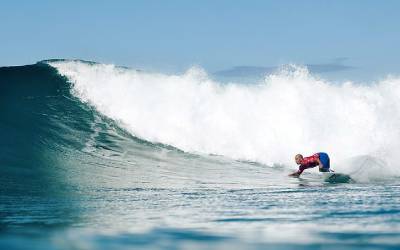Since you’re snared to the sentiment of riding waves you’re most likely prepared to step it up and begin improving your skills. We’ve accumulated tips and exhortation from a portion of the top SUP surfing aces from around the world to help guide you towards your objective of improving as a high-quality paddle surfer. See what they needed to state underneath.
1. Work on your Basics:
The primary thing to improving your SUP surfing skills is to ensure that you have the essentials aced. Without having these fundamental skills aced you can undoubtedly wind up in a circumstance where you’re trapped in a hopeless cycle and not seeing any improvement. Rehearsing the essentials is critical to ensuring you’re on the correct way in improving your performance. Ensure that you have your pivot turns down, discover your balance point on your board and when you’re beginning ensure that you’re dealing with getting a decent stroke.
2. Have a more experienced Company
A simple, fun and natural approach to advance in surfing is to encircle yourself with individuals who are better than you and that can help you en route. You can learn by watching and contemplating them while additionally getting input from them continuously while you’re out in a meeting and naturally you will end up improving. If you’re simply beginning go with a companion and have some good times because if you have a great time at that point you’re going to want to go out for another meeting and the more meetings you have the better you will get.
Double cross ISA World Champion surfer Sean Poynter says that you should “discover somebody who knows stand up paddle surfing, regardless of whether it be a guide or a retreat and attempt and hook on to them and ask questions.” Poynter himself has surf retreats during the time in Mexico with Ian Cairns who was team USA’s SUP mentor for a long time. Poynter proceeds, “You will gain from watching others and watching what they are doing, along these lines, search for tips on the web, tips from folks on the beach and it will be the person who knows what they are doing who will have the option to give you the tips and bits of knowledge on what you have to know and how you can better yourself.
3. Cross Train with multiple types of surfing:
At the point when SUP surfing you have a ton to consider (paddle situating, swarms, hardware, and so on.) which can get quite overpowering when you’re new to surfing. An incredible method to improve and get progressively agreeable is to broadly educate and adopt the conventional strategy to the game and practice on a longboard or a shortboard. Three-time World SUP Surfing Champion Izzi Gomez is one who underpins this and notes that it is the thing that she did and keeps on doing to enable her to improve.
4. Downsize your Equipment:
Marginally scaling back your equipment can be valuable when hoping to improve in the waves. At the point when you start off as a beginner all things considered, you began a board around 10.5 feet which after making sense of the nuts and bolts can be somewhat sluggish to attempt to whip around. In this way, the subsequent stage is attempt and step down to a piece that is somewhat smaller, which thus makes it increasingly maneuverable. At the point when you’re prepared to make the following stride, take a stab at stepping down to a smaller board that is a piece narrower than the board you are as of now riding. This is the stepping stone to get you to a more elevated level. While the smaller boards are a lot harder to paddle, they are a lot simpler to move when riding the wave.
5. Learn how to position:
Being fruitful out in the lineup has a lot to do with how you position yourself and how you really paddle into the waves. If you’re not situated at the correct point when you’re paddling into the wave you can wind up getting tipped over sideways, covering your nose, or in any event, missing the wave out and out. You want to ensure you are getting enough speed to have the option to get the wave however you additionally need to ensure you are not turning your board sideways.
